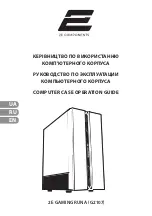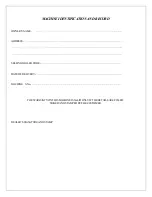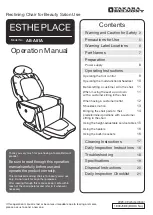
a.
If the device automatically switches to the external power source upon connecting the E-WERK, the built in
battery is neither used nor charged. (If the battery shall be charged after all, connect the E-WERK directly to the
battery contacts - if possible.)
b.
If the connected device’s built in battery is charged simultaneously and unavoidably upon connecting the E-
WERK, caution must be exercised so that the battery is not overcharged. Many devices feature an automatic
charging deactivation that prevents overcharging. If such a deactivation is not present and if the device shows the
charge status, the battery must be disconnected from the E-WERK immediately as soon as it is fully charged. If
neither an automatic deactivation nor a charge status display are present, a warming battery is a sign for the
onset of overcharging.
Direct charging of batteries
Independently from devices, single batteries can be charged by the E-WERK separately or joined together. Use
batteries purchased in specialist shops and connect the E-WERK to + and -.
Depending on the number of cells and the battery technology, the E-WERK has to be set to the correct value:
number of
cells
voltage setting of E-WERK for...
NiCd/NiMh
nominal voltage
per cell 1.2 V
Li-Ion/Polymer
nominal voltage
per cell 3.6 V
Pb
nominal voltage
per cell 2 V
1
4.2 V
2
2.8 V
8.4 V
3
4.2 V
12.6 V
7.0 V
4
5.6 V
5
7.0 V
6
8.4 V
7
9.8 V
8
11.2 V
9
12.6 V
With these values, overcharging is not possible.
Caution:
These values only apply to batteries without a
charging electronic.
Too high voltage can lead to the destruction of the connected battery. If more than one cell are connected
serially during charging, all cells must have the same build, capacity and charge state.
The output current of the E-WERK should not be set higher than the value stated on the battery (capacity value;
the maximum value for the E-WERK is 1500 mA). Li and Pb batteries are charged 100% when using the values
stated above. NiCd and NiMh batteries are charged to about 80% (To prevent overcharging, limited voltage is
used for charging).
Already at a speed of about 15 km/h the charging time of the E-WERK is on par with standard mains connected
charging units.
Powering battery headlights by Busch & Mueller
The E-WERK can be used for charging and – if needed – simultaneous powering of battery headlights by
Busch & Mueller. The following values have to be set:
IXON IQ:
6.3 V, 1 A (use charging socket, charge control integrated in the headlight)
IXON IQ Speed:
7 V, 1.5 A (connect E-WERK to one socket of the battery, headlight to the other)
Big Bang:
8.4 V, 1.5 A
Fitting adaptor cables for headlights are available upon request. The batteries of IXON IQ Speed and Big Bang
can be charged separately (without using the headlight).
Simultaneous use of dynamo lighting system and E-WERK
A simultaneous use is possible. Please note that a functioning parallel operation until 6.3 V can only be
guaranteed when using a diode rear light and IQ headlight by Busch & Mueller. The output of the lighting
4























